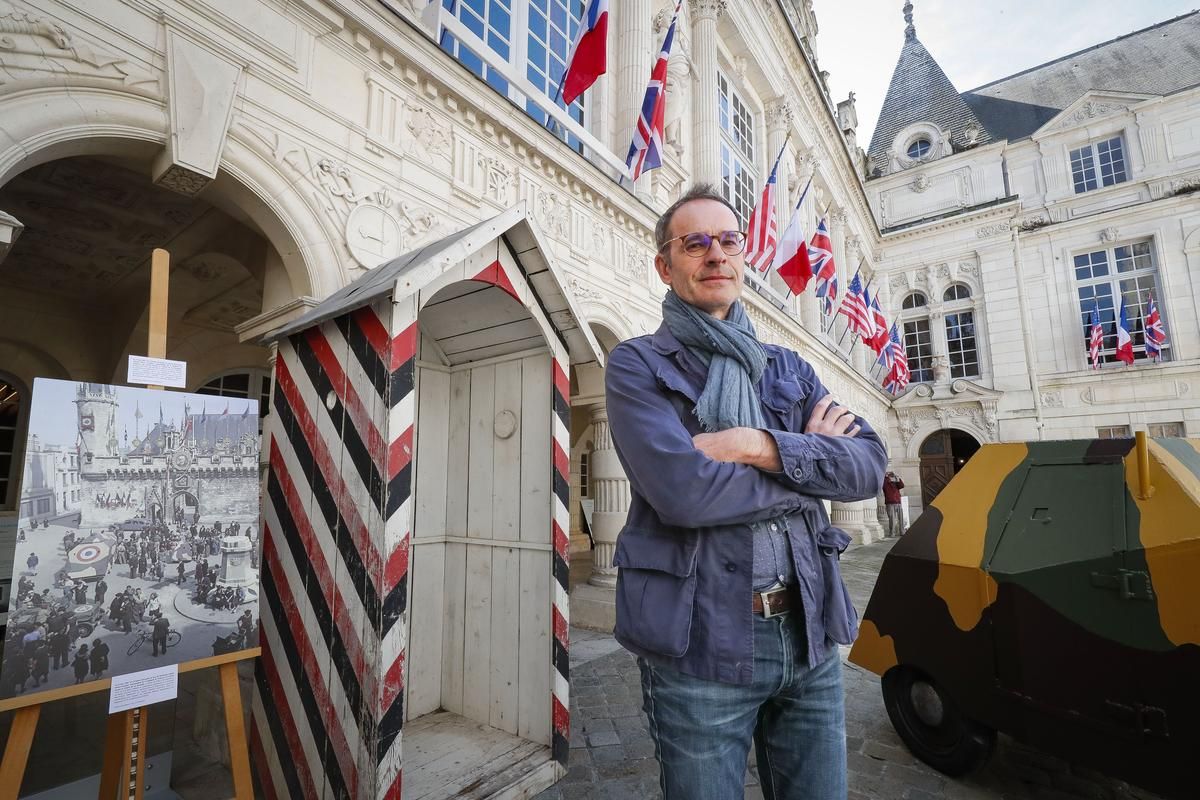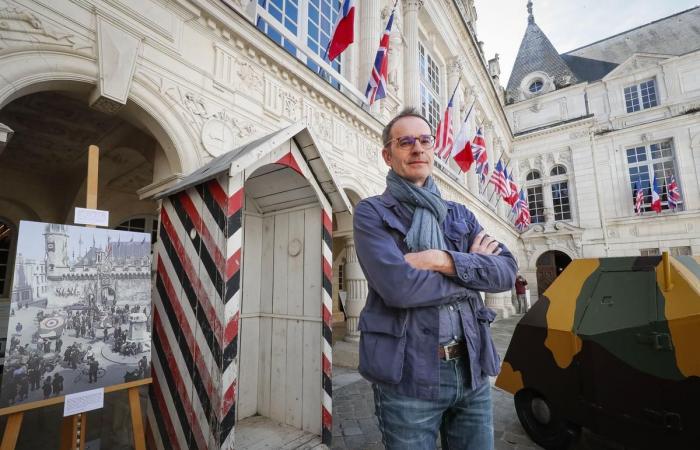DDid they save them a fatal destiny in La Rochelle? This is what historian Robert Kalbach, who died in 2016, and the writer, of the subject, Olivier Lebleu, authors of “Meyer and Sylitz, are convinced, the best enemies” (1). The book has just been republished in a revised version and has been translated into English. Their story is that “of an impossible meeting and an improbable dialogue” between the French negotiator and the German commander of the Pocket de La Rochelle, both working to preserve the Charentaise-Maritime capital from the destruction, the last prefecture released on May 9, 1945. Their negotiations signed the victory of the nuance in a period of intense radicality-an old example of 80 years. Interview with Olivier Lebleu.
“It has never been found in Hitler, or in any case of the maritime military hierarchy, aimed at blowing up La Rochelle”
Was the threat of destruction of the city of La Rochelle only a red cloth agitated by a cornered enemy or was it a real danger?
This is one of the things recently rediscovered thanks to the research of Luc Braeuer. By crossing the French, English and American archives, it has never been found in Hitler, or in any case of the maritime military hierarchy, aimed at blowing up La Rochelle. But the fact is that the city was undermined: the old port, but even more the port of the pallice where the underwater base was located. If we have never found in German communications of the official order, we recently discovered a communication in which Hans Michahelles, the counterpart of Ernst Schylitz in Royan, encouraged the latter to use this threat. In addition, the Germans blew up the Mole of Verdon. If they did it to the Verdon, they could be feared that they will do it in La Rochelle.

Jean-Christophe Sounalet/SO
Not to mention the example of Royan, bombed twice by the Allied forces …
It is symptomatic of bad intelligence between allies. These bombings should never have taken place.
The story of La Rochelle’s pocket is almost romantic. Hubert Meyer and Ernst Schylitz are like the other subject to pressures aimed at radicalizing their positions …
Originally, there is an absolutely incredible story. When Meyer arrived in Rochefort in September 1944, two German soldiers were killed by resistance fighters. Because it is necessary at all costs to rule out the risk of reprisals on civilians, Meyer decides to throw the bodies in the Charente. Except that they go up. It is decided to drive them to the stones. At the next tide, the bodies reappear. The Germans denounce an act of torture. The situation will ask Hubert Meyer, who meets Ernst Sylitz for the first time, all his science of negotiation and mediation. He will have this sentence that will mark a turning point: “You know that between seafarers, these things are not done. »A code of honor binds them. Sylitz poses and offers a cigarette to Meyer. Then a dialogue is committed.
“By putting their biography in parallel, we realize that there are many common points which allowed these two men to speak the same language”
Being both sailors create a connection. On what other bases is born the respect that binds them?
By putting their biography in parallel, we realize that there are many common points which allowed these two men to speak the same language: the importance they attach to the honor, the loss of children, a common faith (they are both Protestants) and I do not know if the two were aware of it but there is an orphan of father who speaks to an orphan of mother. For me, there is a kind of psychological nesting that takes place.
The convention they adopted in October 1944 aims to respect the military codes and makes it possible to find a status quo freezing the fights outside a buffer zone. Important precision, Sylitz is not a Nazi.
Did La Rochelle come close to the point of no return during this period?
In April, General de Larminat decided to terminate the Convention at the time when a tragic event strikes Schylitz: he loses in a bombardment his two daughters-in-law and their children. He has nothing to lose. And when he arrives in front of Meyer, it is to say to him: “You have decided to terminate the convention, you want to go to battle, there is nothing more to say. And he turns his heels. The help of Camp de Sylitz comes to Meyer and informs him of the reasons for his attitude. Meyer knows this sorrow, and I like to believe that, without being naive either, it is in a spontaneous impulse that he catches Schylitz by the arm, shakes his hand and said to him: “All my condolences my admiral, I know what it is to lose children. Sirlitz replies that from all the condolences he has received, it is the ones that touch him the most. With Meyer, they then choose to stick to their words of honor and respect the line defined in the convention, even if it was terminated from above.

Reproduction SO
Meyer’s action is now magnified, it was criticized at the time. His daughter remembers, during the negotiations, to be seen as “the girl of the collaboration”.
It must be remembered that the Convention was secret. No one understood why he was going and came between French and German lines. It was also not known that he was responsible for supplies. He still found himself in Tonnay-Charente with a machine gun pointed on his stomach and targeted by two attacks.
I just want to come back to the term “magnified”. Hubert Meyer did enormously, but others also did a lot: Désiré Arnaud, Erik Mörch, Léonce Vieljeux, etc. It would not be fair to say that the rescue of La Rochelle is only due to Meyer, even if the essentials are still to put to his credit.
“There is no Meyer without Sylitz and no Sirlitz without Meyer. It is a human encounter that gives this result and it is all the beauty of this story ”
Six years ago, the mayor of La Rochelle wished that a street, as an extension of Meyer Street, bears the name of Admiral Sylitz. The challenge being too strong, he gave up. 80 years old, is it insufficient to hear that a German officer, even in the service of Nazi Germany, was not necessarily a bastard?
At the time of the controversy, Jean-François Fountaine consulted me. I told him that, from my point of view, it was a mistake. We do not give a German name to a French street, even if we have the feeling that he behaved well. There are so many resistance fighters and resistant women that can be honored. A very good idea, in my opinion, would have been to appoint a Meyer-Sylitz street. There is no Meyer without Schylitz and no Sirlitz without Meyer. These two men managed to get along, freeze the fights and make it hold. It is a human encounter that gives this result and it is all the beauty of this story.
(1) “Meyer and Sylitz, the best enemies”, by Olivier Lebleu and Robert Kalbach, ed. Pocket, 430 p., € 12.90.










